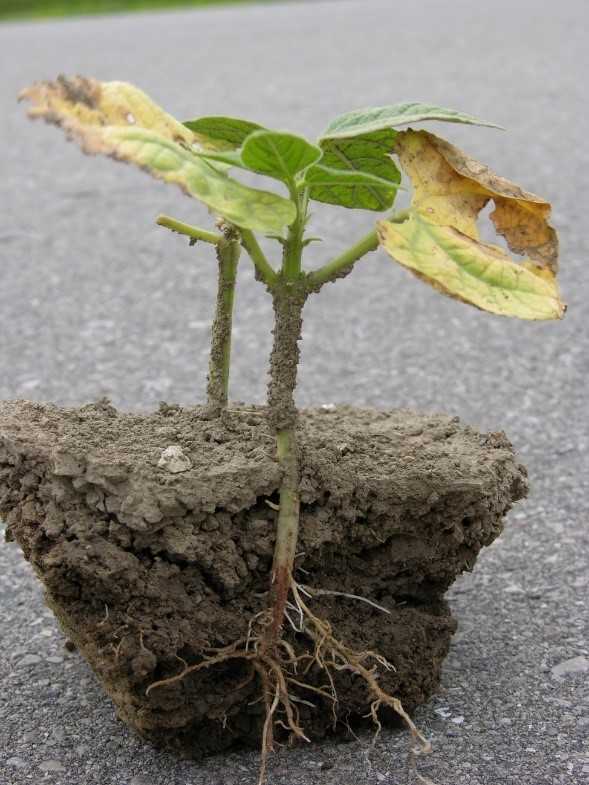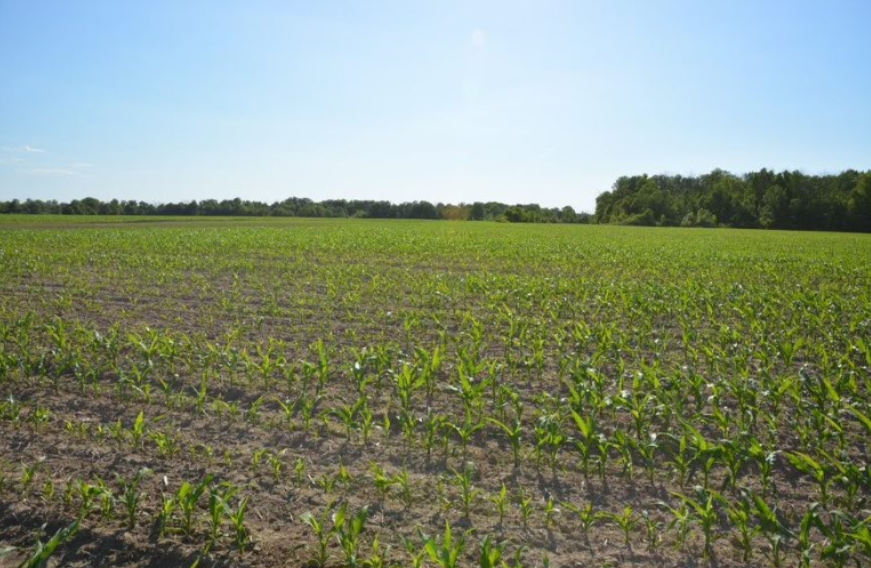2021 Corn Seasonal Summary

Planting In March 2021 Statistics Canada estimated Ontario farmers intended to plant 2.2 million acres of grain corn, 3% higher than the 5-year (2016-2020) average seeded acres of 2.14 million acres (OMAFRA Crop Statistics). Spring 2021 provided a great start for planting. While April generally remained cool, lack of rainfall provided excellent soil conditions with […]
2021 Ontario Grain Corn Ear Mould and Deoxynivalenol (DON) Mycotoxin Survey

Co-authored with Albert Tenuta, Field Crop Pathologist, OMAFRA. OMAFRA field crop specialists in collaboration with Grain Farmers of Ontario (GFO) and members of the Ontario Agri-Business Association (OABA) have completed the annual Ontario corn ear mould and DON mycotoxin survey. Corn ear moulds such as Gibberella and their corresponding mycotoxins occur every year in Ontario. […]
Crop Report – August 25, 2021
It is safe to say that western bean cutworm (WBC) is a pest that we can rely on entering corn and dry beans every year in Ontario. Though a frustrating pest to scout for, using traps to monitor moth flight has helped us better predict when to expect peak moth flight occurs, which is shortly […]
Crop Report – July 14, 2021

There are mixed reports on the health of dry beans in Ontario this season. While many fields look good, rains following the initially dry conditions at planting have increased the incidence of root rots as well as the risk of white mould. Root Rot In Ontario, the four main fungal pathogens causing root rot […]
Great Lakes and Maritimes Pest Monitoring Network
The Great Lakes and Maritimes Pest Monitoring Network (GLMPMN) is up and running for the 2023 season. We are monitoring for black cutworm (BCW), corn earworm (CEW), European corn borer (ECB), fall armyworm (FAW), true armyworm (TAW) and western bean cutworm (WBC) across the region and are providing an interactive real-time map and trap data dashboard that […]
2021 Great Lakes and Maritimes Pest Monitoring Network

The 2021 Great Lakes and Maritimes Pest Monitoring Network (GLMPMN) is up and running for the 2021 season. We are monitoring for black cutworm (BCW), corn earworm (CEW), European corn borer (ECB), fall armyworm (FAW), true armyworm (TAW) and western bean cutworm (WBC) across the region and are providing an interactive real-time map and trap […]
Corn Rootworm and Bt Resistance in Ontario

Rootworm Biology and Impact Corn rootworm (CRW) is a serious pest of continuous corn in Ontario. CRW larvae are the main concern, as they clip roots and inhibit root growth, resulting in poor nutrient and water uptake in the plant. Significant yield loss occurs before these symptoms are even noticed. For every node of […]
2020 Corn Seasonal Summary

Planting In March 2020 Statistics Canada estimated Ontario farmers intended to plant 2.3 million acres of grain corn, 10% higher than the 5-year average seeded acres of 2.1 million acres (2015-2019) (OMAFRA Crop Statistics). Spring 2020 provided a great start to planting. April remained cold but sun and dry weather provided an extended period of […]
2020 Ontario Grain Corn Ear Mould and Deoxynivalenol (DON) Mycotoxin Survey
Co-authored with Albert Tenuta, Field Crop Pathologist, OMAFRA OMAFRA field crop specialists in collaboration with Grain Farmers of Ontario (GFO) and members of the Ontario Agri-Business Association (OABA) have completed the annual Ontario corn ear mould and DON mycotoxin survey. Corn ear moulds such as Gibberella and their corresponding mycotoxins occur every year in Ontario. […]
Update on WBC Trap Counts for This Week
Here is the latest update on where the trap catches are for western bean cutworm in the region based on trap site data entered into the Great Lakes and Maritimes Pest Monitoring Network. Peak flight for Ontario and most other states and provinces on the network (except Michigan) occurred during Week 11 (Aug 3-9) (see […]
Silk Clippers – Watch Out for These Three Culprits
Many reports are coming in about silk clipping in corn. Three main culprits include corn rootworm beetles, Japanese beetles and redheaded flea beetles. Regardless of which one is doing it, it comes down to when and where they are clipping and by how much. Corn silks can grow as much as an inch or more […]
OMAFRA Field Crop Report – July 16, 2020

Dry beans are either approaching flowering or have already started flowering across Ontario. White mold is an important disease of dry beans in Ontario and in-crop management of white mold occurs during flowering. White mold spores can land on stems, leaves or pods but deteriorating flower petals are very susceptible to infection. Spores colonize flower […]
Ridgetown – Simcoe Ag Business Breakfast Meeting – June 30, 2020
Weather update: Most of the area is under hot and dry conditions. Spotty thunderstorms have resulted in variable rain ranging from no rain to 5 inches at Stoney Point (Essex). About 1/3 of normal total crop heat units (chu) will be accumulated by end of June. Considering cold temperatures to start the season, current chu […]
Exeter and Mt Forest Agribusiness Breakfast Meeting Minutes – June 23, 2020

This was the last breakfast meeting for the Exeter and Mt Forest group. Thank you to everyone who has participated this season, and for adapting to the new Zoom format. Corn Crop advisors are getting a lot of questions right now about leaf wrapping and yellow flash on corn leaves. While this may look similar […]
Ridgetown-Simcoe Agribusiness Breakfast Meeting Minutes – June 16, 2020

Approximately 52 people attended the 6th Ridgetown-Simcoe Breakfast Meeting. This was officially the last call for these regions this spring, though there was interest in continuing on for at least one more call – stay tuned for details. Overall, discussion focused on good looking wheat, tough-looking corn, herbicide injury concerns in soybeans and edible beans […]